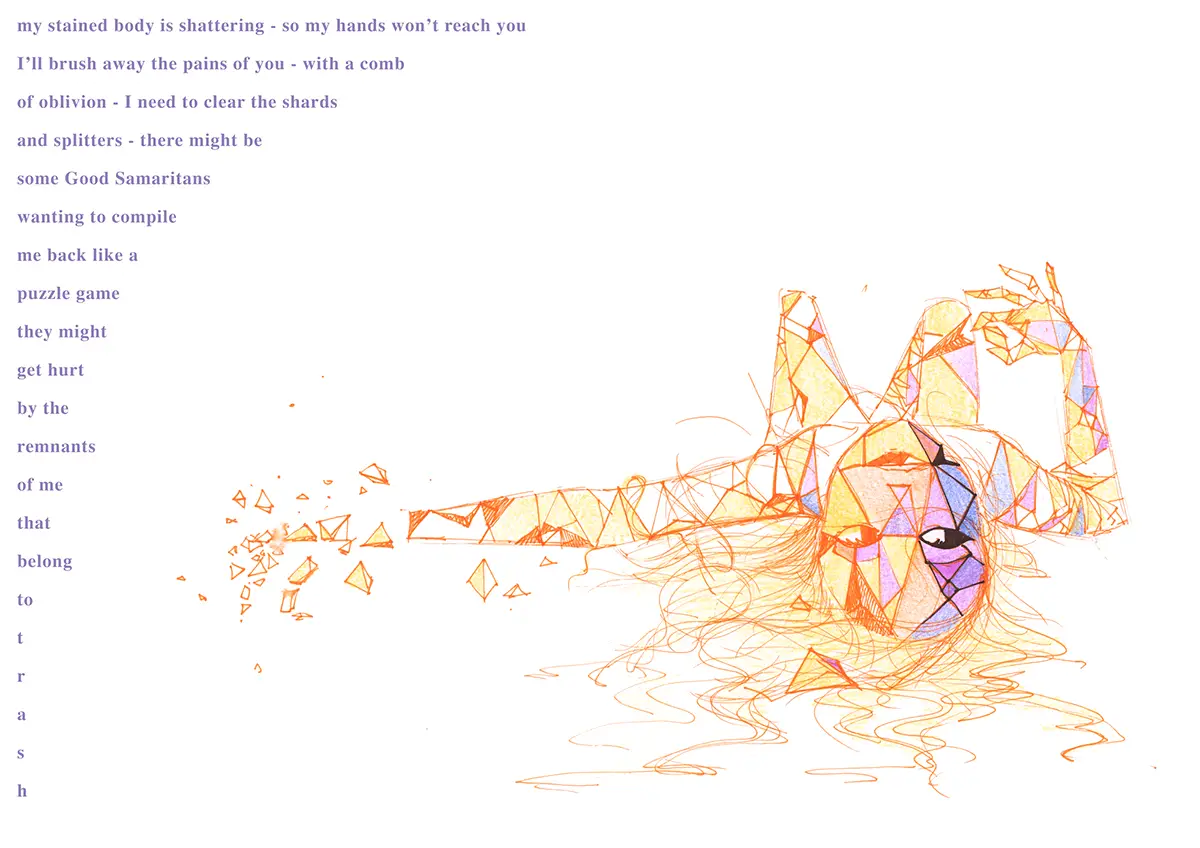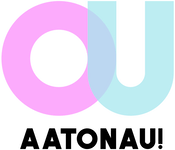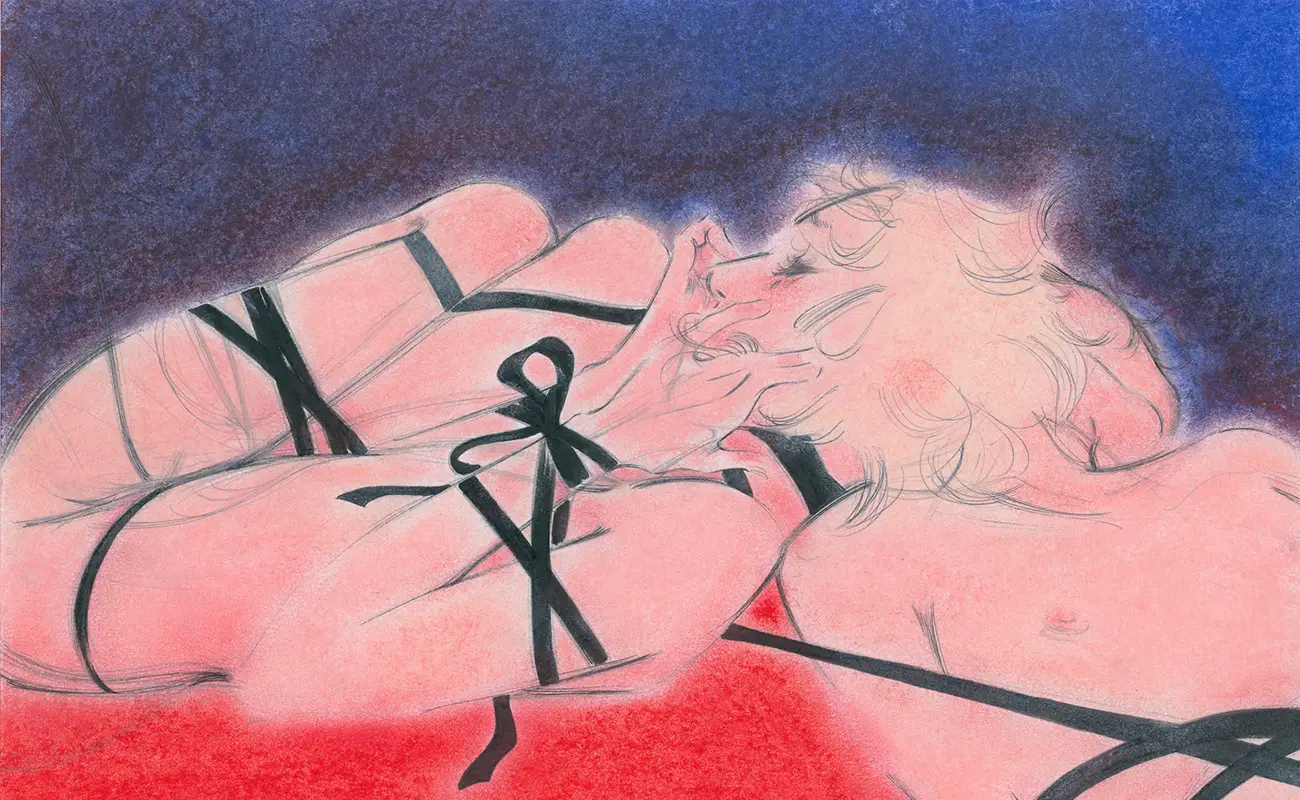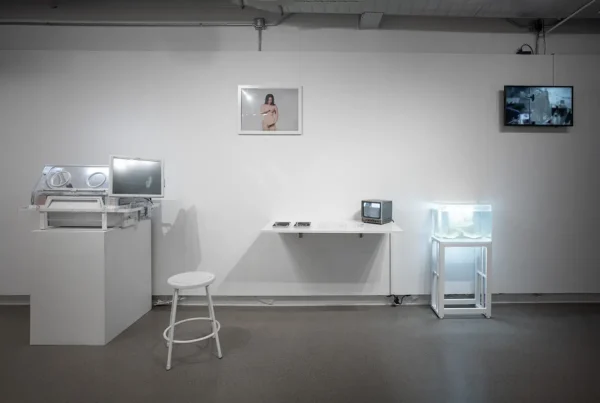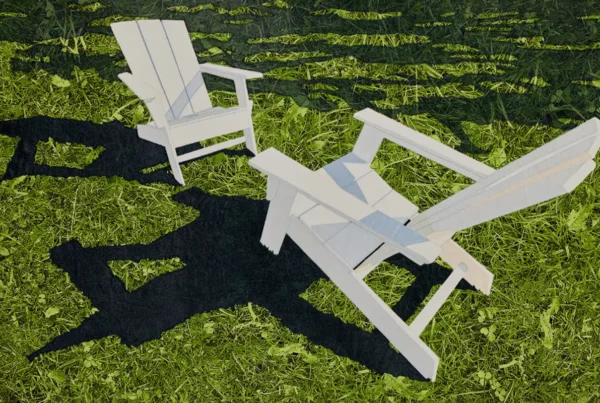“Nicol’s pictures literally enchanted me and brought out my memories… the poems were born in the process of writing, without a plan and without thinking.”
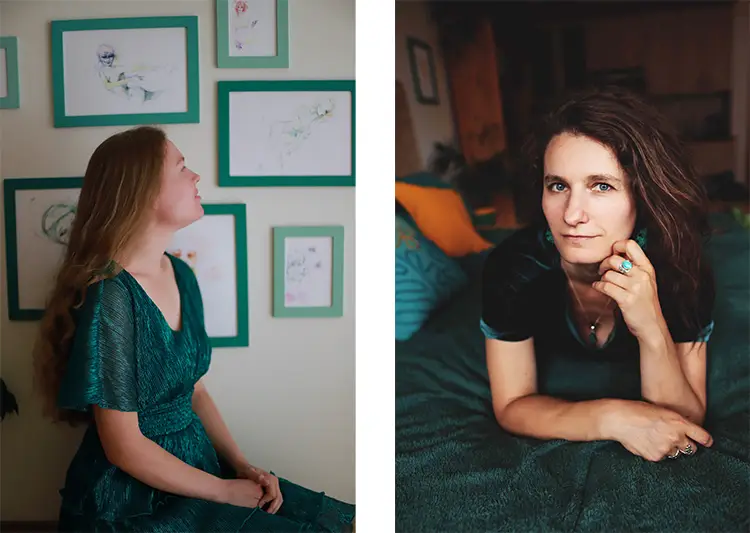
The Alchemy of Image and Word
Can a pencil line ignite a poem? For visual artist Nicol Francis Hendruk and writer Helena Lněničková, the answer unfolds vividly across pages, projections, and poetic rhythms. Their collaborative project, an intricate conversation between figurative drawing and emotionally charged poetry, dissolves the boundaries between visual and literary art. What began as a single book cover selection has expanded into a multilayered creative venture, now encompassing an art book of over 100 illustrated poems, limited edition prints, and live performances featuring video projections paired with Helena’s spoken word.
Hendruk and Lněničková, both rooted in Czech culture though from different generations and backgrounds, are driven by a shared desire to portray the human emotional spectrum—especially the interior lives of women. Their synergy is not merely stylistic but intuitive. Nicol’s hand-drawn figures, infused with sensuality and vulnerability, offer a visual diary of the body in motion. Helena’s poetic responses, written as spontaneous emotional reactions to these drawings, flow freely and unplanned, forming verbal counterparts to the raw immediacy of Nicol’s work. Together, their project captures something that is neither drawing nor poetry alone but something between—a synesthetic bridge between the eye and the soul.
In exhibitions, prints, and recitals, this union of text and image invites audiences to experience art not just as passive observers but as participants in a shared internal world. Whether through a curated page or a projected animation accompanied by Helena’s voice, the audience is gently pulled into the interstice where thoughts begin to rhyme and forms start to whisper. It is here that Hendruk and Lněničková offer something rare: an emotionally charged space where vulnerability is not edited, but embraced.
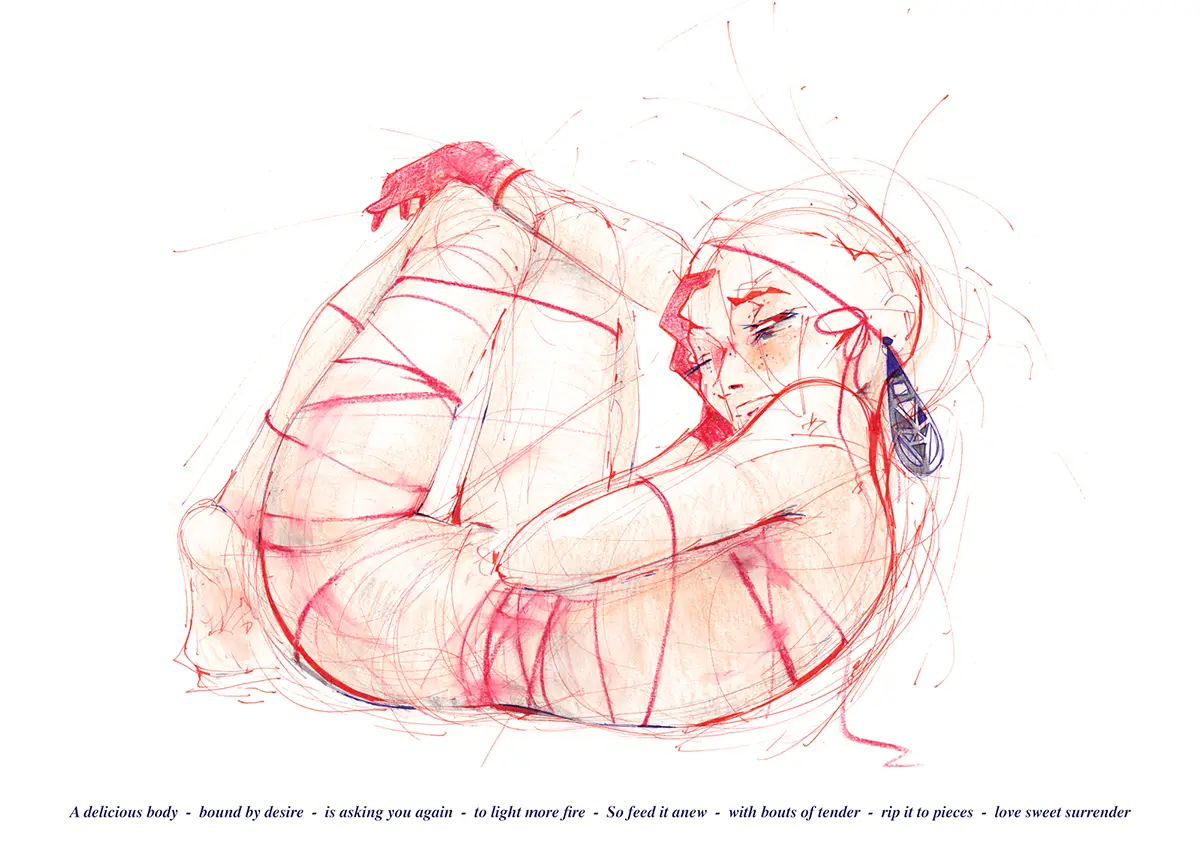
Nicol Francis Hendruk & Helena Lněničková: A Dialogue in Form and Feeling
Nicol Francis Hendruk’s approach to art is rooted in instinct. Born in Phoenix, Arizona in 1998 to Czech parents and raised between continents, her multicultural experience infuses her drawings with a wide emotional vocabulary. Her artistic process rejects formal structure or reference materials. Instead, she allows her hand to wander freely across the paper, with each line leading to the next in a process closer to trance than technique. Figures emerge unexpectedly—fluid, sometimes contorted, always expressive. Her deep fascination with the human form, especially feminine figures, speaks to an inner dialogue with identity, desire, and vulnerability.
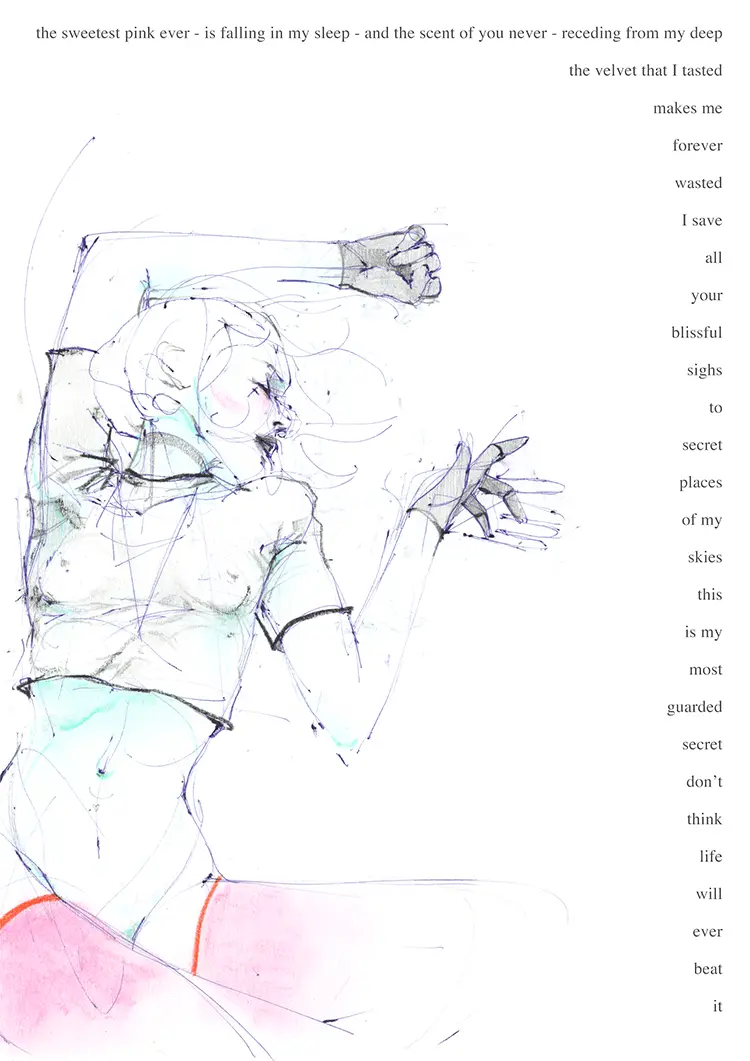
Helena Lněničková, born in 1981 in the Czech countryside, rediscovered her creative voice through Nicol’s images. With a background in English Philology and a love for literature, she had long been a reader before becoming a writer. Her first foray into creative writing began with a personal blog, and later, an autobiographical novel. But it was Hendruk’s artwork that reignited her poetic sensibilities. Without premeditation, the drawings summoned buried emotions and long-forgotten memories. Helena responded with words that arrived like whispers in the night—spontaneous and often written in one sitting. The act of translating these poems into English wasn’t simply linguistic; it became a second creation, reshaping each piece in a new emotional key.
The synergy between their styles is striking. While Nicol’s visual compositions explore intimacy and emotional rawness through body language and motion, Helena’s poems serve as mirrors, amplifying or reframing the visual emotions in language. Both artists work in intuitive states, rarely revising or editing, trusting their instincts to channel something truthful and immediate. This commitment to honesty over polish has defined their joint works, allowing each creation to pulse with emotional authenticity.
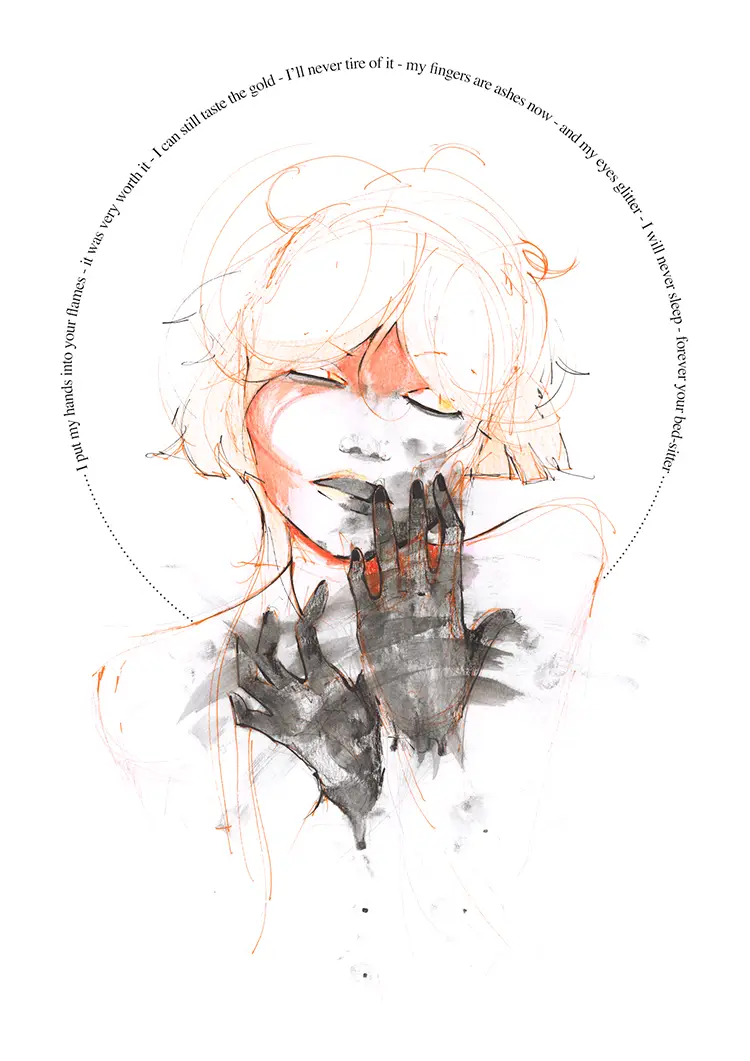
Between Vulnerability and Vision
Themes of emotional transparency, especially as they relate to femininity, are central to both Nicol and Helena’s work. Their collaboration centers on portraying women’s experiences not as archetypes or idealized forms, but as complex, often contradictory expressions of inner life. Nicol’s figures—usually women—are drawn with an urgency that prioritizes mood over perfection. Through gestures, postures, and occasional distortion, she captures moments of delight, despair, sensuality, and unease. The figure becomes both character and conduit—inviting projection and empathy.
Helena’s writing draws its momentum from these images. The poems are not descriptions but translations of sensation. A single drawn pose might evoke memories of heartbreak, self-discovery, or maternal conflict. Helena’s words are not merely responsive but transformative—they absorb the emotional pulse of Nicol’s drawings and redirect it into new literary shapes. Though the process appears spontaneous, it is steeped in a deep trust between the two creators, allowing each to explore intimate emotional territories with courage and candor.
The signature print AUREOLE stands as a powerful testament to this approach. Created after visiting the Alfons Mucha exhibition in Prague, the duo was inspired by the romantic and mystical portrayal of women in Mucha’s work. They translated that mood into a visual-poetic fusion, arranging a poem in a circular shape to form a halo around the head of a drawn woman. The result is more than just an homage—it is a reimagining of classical beauty through the lens of modern emotional honesty. The drawing and its accompanying verse do not idealize the subject; instead, they enshrine her complexity and humanity.
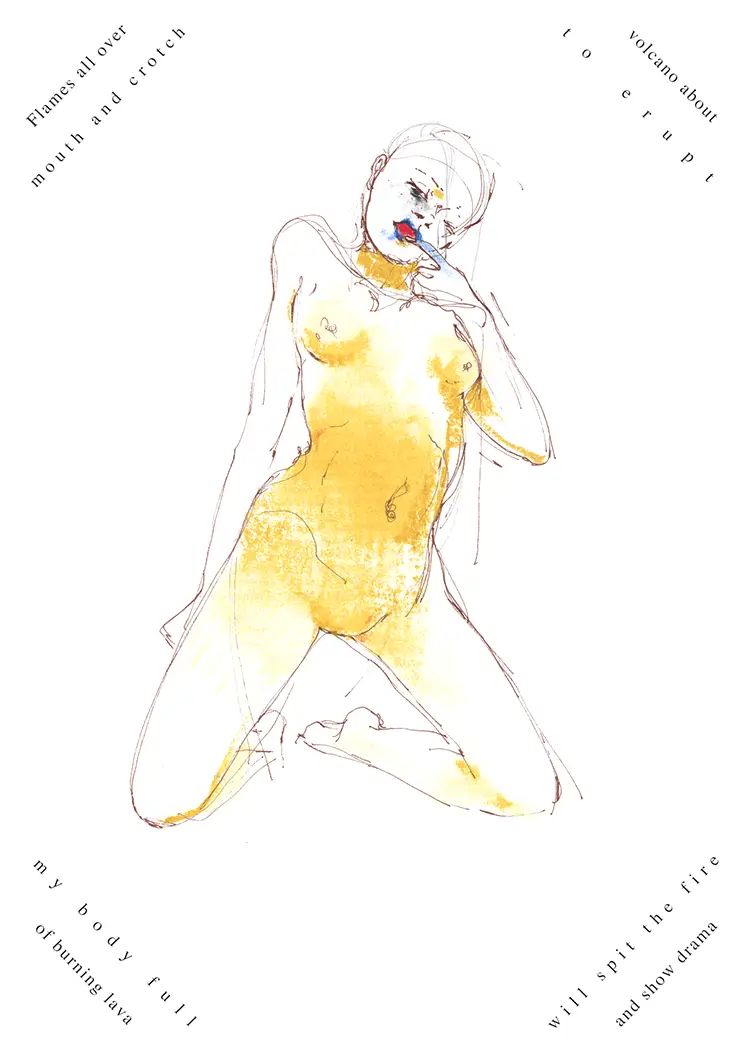
Nicol Francis Hendruk & Helena Lněničková: Unfolding Futures, Expanding Frames
From their first collaboration, Hendruk and Lněničková have steadily expanded the reach and format of their work. Beginning with exhibitions and a self-published art book, they ventured into print editions that play with the visual layout of poems, aligning the structure of each text to echo the contours of the figures on the page. This interplay of visual and verbal form has continued to evolve. Their most recent creative direction—video projections paired with live poetry recitals—marks a significant shift toward performance art. These events transform passive viewing into immersive experiences, blending movement, sound, and language in real time.
Their creative process remains grounded in spontaneity, but their ambitions are increasingly expansive. The next project on the horizon is a short film—a visual-poetic hybrid designed to reach a broader audience. Though still in the conceptual stage, the idea is to push their collaborative language even further, merging animation, performance, and spoken word into a cohesive narrative experience. Their aim is not simply to document their work, but to construct a space where viewers can fully engage with the emotions behind each line and stroke.
What makes this collaboration unique is its refusal to compartmentalize. Nicol continues to draw using a mix of tools—pencils, aquarelles, pens, pastels—always choosing immediacy over technique. Helena, though originally reliant on Nicol’s images for inspiration, now writes poetry drawn from her own emotional life, often sparked by love, memory, or solitude. Their paths have begun to diverge even as they remain tightly interwoven. Both artists retain their individual voices, yet their work continues to enrich each other’s practice. Whether as a drawing that gives rise to a poem or a verse that reshapes how a figure is perceived, theirs is a collaboration built not on method, but on a shared impulse to feel—and to share that feeling boldly.
